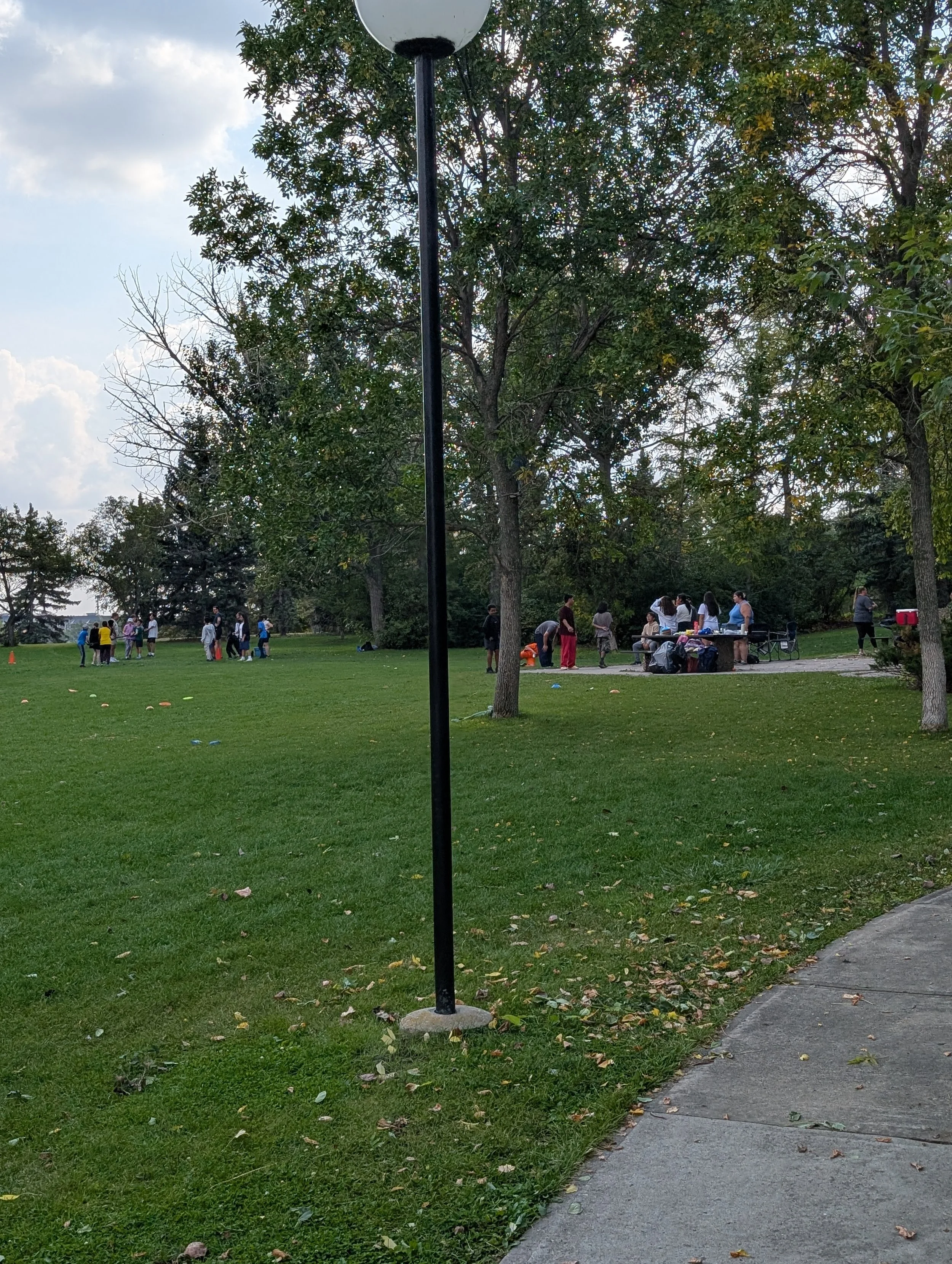Urban Forest Management
JUMP TO:
MORE DEVELOPMENT SECTIONS:
URBAN FOREST MANAGEMENT
Maintaining a Thriving Tree Canopy
A community’s tree canopy is a great asset, and should be carefully managed and protected. From shade to beautification of a neighbourhood, healthy trees are necessary for healthy communities!
A mature urban forest can help mitigate the effects of heat and pollution, reduce wind through built up areas, prevent damage from water erosion, and reduce heating and cooling costs by balancing heat and humidity.
Managing your urban forest can be a challenge, both for your parks and for your streets. With a few tools and some advice from experts, you can manage the costs and resources required more effectively.
An urban forestry management plan helps keep all the priorities for your tree canopy aligned.
Tree canopy providing shade for picnicking families, Wascana Park, Regina
The Value of an Urban Forest
If you consider the trees in your community to be an asset, then calculating the value of that asset can help make good choices about investing in ensuring its health.
From maintenance to replacement, the effort a community puts into the durability of the tree ecosystem has tangible benefits, including increasing the value of private property.
By calculating the cost to replace mature trees, and the maintenance required to get new trees to establish, you can balance the cost of hiring professionals to assist with your needs.
There is a cost to developing a management plan, but there is also a cost to losing a mature tree canopy due to mismanagement.
Exploring the cost and benefit of capturing your tree inventory, and using a system such as a Geographic information system (GIS) to track that inventory might be a great way to get a picture of the value of your trees.
Beautiful fall colours in Weyburn, SK
Tree Inventory: Weyburn’s Process
In 2020, the parks department for the City of Weyburn proposed to council that they undertake an inventory of the urban forest. The proposal outlined the numerous benefits to having a thorough tree inventory, including tracking the history and condition of each tree, as well the number of species throughout the city.
Weyburn’s tree canopy, like many communities in Saskatchewan, have a high percentage of Dutch Elms which are susceptible to Dutch Elm Disease. Having an inventory of the percentage of trees that could be affected contributed to the process for prevention.
The tree inventory was undertaken by a certified arborist consultant company, and included the species, age, condition, and value of the tree. To improve efficiency in the tree management process, the information was input to a GIS that could then be updated by park department staff when requests for maintenance, changes to the tree, or replacement occurred. The initial inventory formed the basis of a thorough history and life cycle of the tree, and a tool to simplify maintenance.
Certified Arborists: ISA
If you decide to invest in a tree inventory, or if you have questions about Urban Forestry Master Plans, a certified arborist is the expert you need. They are trained specifically in urban forest management, and are certified by a third party.
To find a certified arborist, or to find out more about urban forest management, you can access a directory and resources on the website for the Prairies Chapter of the International Society of Arboriculture.
Managing Dutch Elm Disease & Other Challenges
Public education about the threat of invasives, and a process for monitoring invasive species, can help mitigate risks. Be proactive in keeping your urban forest healthy!
Dutch Elm Disease can have a devastating impact on a community’s tree canopy, and it is just one of many potential risks to a community’s trees.
A high density of a single type of tree means a high susceptibility to pests and diseases. Early prevention, monitoring, and spot treatments can help a community prolong the health of an urban forest, but being aware of current and rising threats means being proactive in tree replacement over time.
In communities that have been dealing with Dutch Elm Disease for decades, such as Weyburn, Swift Current, and Saskatoon, public education campaigns have helped residents identify risks and report them.
The City of Weyburn has a robust and proactive method of dealing with the risk of imported elm wood, and the City of Saskatoon provides free disposal of elm wood to help reduce the prevalence of the disease proliferating through imported wood products.

CHECKLIST ITEM
Start the process to identify and record your community’s publicly owned trees. Find a certified arborist to explore the costs and benefits to having an urban forest master plan.
Thriving Urban Forest, Swift Current








